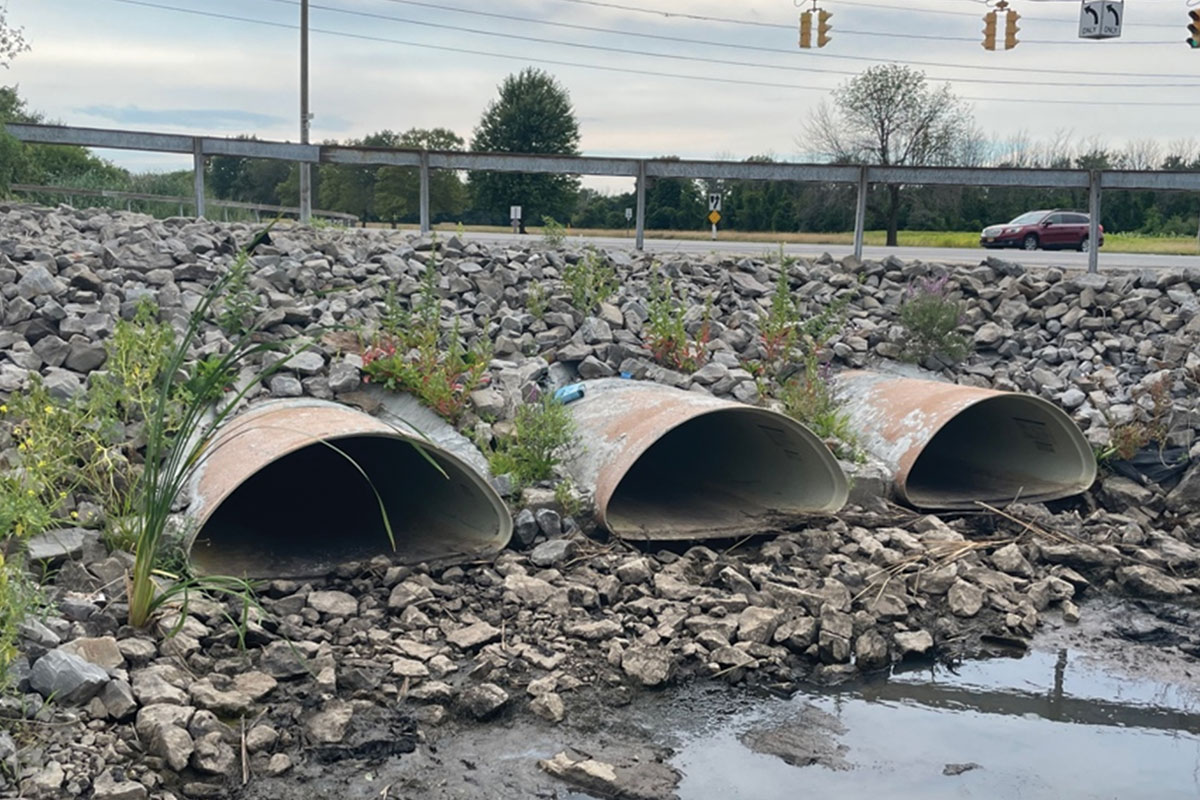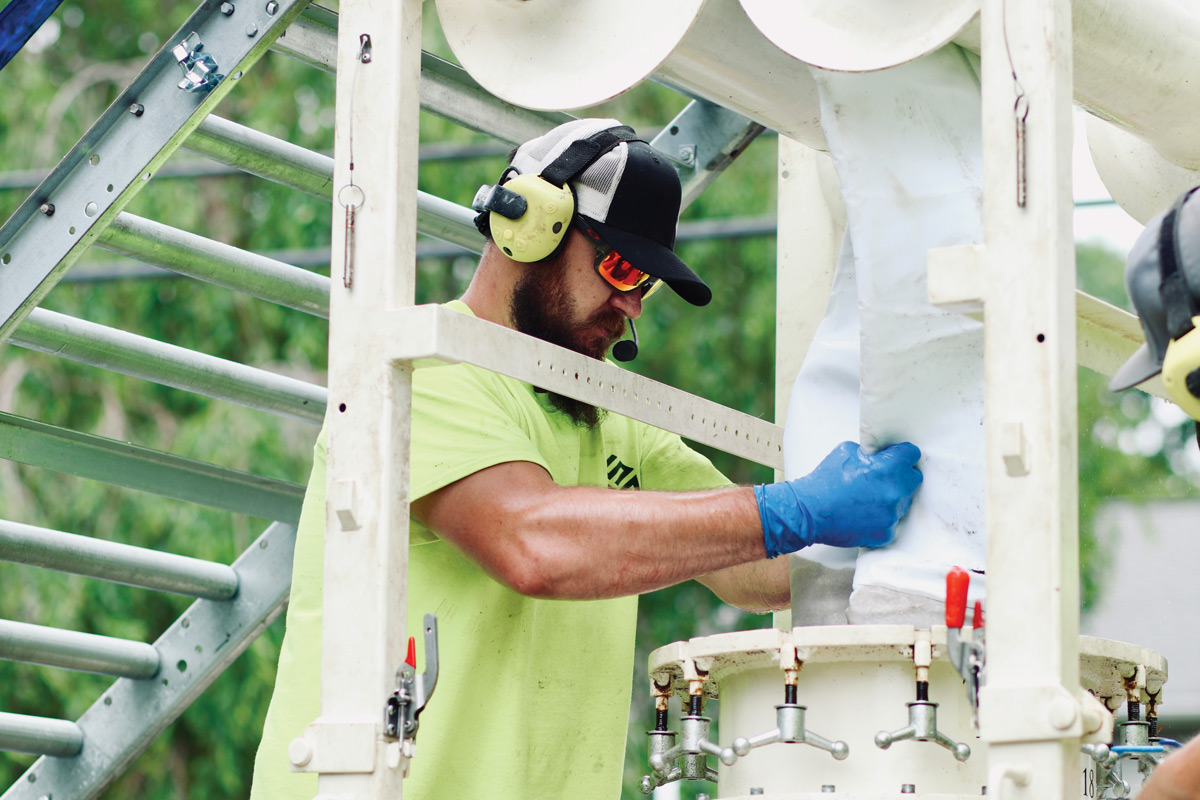
Preserving the Bay Area Through Sliplining
With any aging system, inspection, cleaning, rehabilitation and repair is essential to maintaining the systems integrity. The City of Oakland, California — the largest city in the East Bay region — certainly has its share of utilities to maintain. The City of Oakland’s sanitary sewer system encompasses more than 930 miles of sanitary sewer pipes and includes 31,000 structures and seven pump/lift stations.
The City of Oakland is responsible for the public sanitary sewer main pipes that carry waste to the treatment plant while East Bay Municipal Utility District (EBMUD) is responsible for sanitary sewer treatment and disposal. In 2014, an agreement was reached in the form of a Federal Consent Decree (CD) between the U.S. Environmental Protection Agency (EPA) and EBMUD along with the cities of Oakland, Alameda, Albany, Berkeley, Emeryville, Piedmont and the Stege Sanitary District to protect San Francisco Bay from sewage spills. This settlement gives the cities and districts until 2036 to repair and replace sewer lines; reduce the amount of inflow and infiltration, and reduce discharges into San Francisco Bay during heavy storms.
RELATED: HOBAS Launches New Generation of GRP Pipes
The City of Oakland had already spent millions upgrading its system when the consent decree was announced in 2014. The City agreed to upgrade 13 miles of sewers annually and are already ahead of schedule. Oakland has spent more than $300 million since the early 1980s to improve its collections system and reduce flows.

After the assessment and design phase, permits were issued to rehabilitate roughly 8,000 ft of the West Grand Sanitary Sewer.
Largest Trunk Sewer in Oakland
A recent project is the Rehabilitation of the West Grand Sanitary Sewer: West Grand Avenue and 20th Street. Constructed more than 90 years ago, this trunk sewer is non-circular and is the largest diameter trunk sewer operating in the City of Oakland. The 72- by 78-in. and 60- by 66-in. system carries wastewater from downtown Oakland to EBMUD’s 105-in. Wood Street Sewer Tunnel to the Wastewater Treatment Plant (WWTP) in the Port of Oakland. After the assessment and design phase, permits were issued to rehabilitate roughly 4,000 ft of the non-circular system by sliplining and 4,300 ft of circular RCP was also included with either slipline or CIPP rehab options.
The $6.5 million project was awarded to Andes Construction Inc., of Oakland, California. The City of Oakland specified fiberglass pipe and CIPP for this rehab and Andes chose to bid the entire project with centrifugally cast, fiberglass reinforced, polymer mortar (CCFRPM) pipe. Slipline was chosen as the rehabilitation method due to the project’s location in a downtown and industrial area and because it also ranged in depth from 8 to 18 ft.
RELATED: Thinking On The Spot — Relining Project in Steubenville, Ohio, Calls for Quick Solution
“The base bid required FRPM for the non-circular sections. The rest, although suitable for CIPP, required a considerable amount of water for the cleaning and curing process of the pipe that at the time was not a good option as we were going through a critical drought so we decided to bid the entire project with fiberglass pipe,” said Andes Construction project manager Cynthia Orozco.
Hobas manufactured approximately 1,656 ft of 63-in. and 1,072 ft of 51-in. for the non-circular portion of the project; more than 1,800 ft of 44-in. and 1,267 ft of 54-in. was also supplied for the circular portion. This would be the first large diameter slipline project for the City of Oakland and Andes Construction. The project began in October 2015 and was completed in June 2016.

Sliplining was chosen as the rehabilitation method due to the project’s location in a downtown and industrial area, and because it also ranged in depth from 8 to 18 ft.
Maintaining Capacity with Sliplining
The existing circular RCP was 48 and 60 in. in diameter. Even though there was a reduction in diameter for the entire project, the smooth interior of the CCFRPM pipe did not lead to a decrease in flow. Hydraulics is an important consideration when planning pipeline rehabilitation. Sliplining always results in a slight decrease in the pipe’s inside diameter; however, because of the much better flow characteristics of CCFRPM liner pipe, the rehabilitated line’s hydraulics are improved relative to its existing condition. Understanding hydraulics can help owners decide what pipe-flow rates related to size and material are necessary to transport water in an efficient manner.
Rapid Installation
Andes Construction was able to push 1,800 ft of 44-in. CCFRPM pipe into the existing 48-in. pipe in less than eight hours. Andes also installed approximately 1,100 ft of 51 in. in about 10 hours and 1,200 ft of 54-in. in 18 hours. Extensive planning, cleaning prior to installation, and a pushing frame built by Andes contributed to the ease of installation.
The majority of the pipe was supplied in 20-ft sections, but shorter 10-ft sections were manufactured for the curved portions. Original plans did not show any curves in the alignment of the existing sewer. After an inspection, it was decided to use 10-ft sections to navigate these changes in alignment.
“The first phase of the project was along West Grand Avenue; there we encountered the first curve. At this location, we had narrow streets and heavy traffic. Here, a smaller pit was excavated and 460 ft of 10-ft sections were pushed upstream without delay,” said Orozco. “The second phase was in the busiest downtown area, Harrison Street; here, the curve was located at a busy intersection where the amount of underground utilities did not allow for a pit excavation. The curve was at the beginning of the last downstream sections of the 60- by 66-in. trunk line. Roughly 220 ft of 10-ft sections were pushed into place, followed by 610 ft of 20-ft sections without interruptions. We switched gears and pushed another 250 ft of 20-ft sections upstream to the beginning of the trunk line; all 64 pipes were pushed within 10 hours. The use of the shorter sections helped us to avoid ground disruption at these busy downtown streets. We used the flush bell-spigot joint and it worked perfectly; there was no need for any additional equipment to keep the pipe aligned and follow through the curvature of the existing system.”
The flush bell-spigot joint consists of an integral straight bell fixed to one pipe end that seals to the spigot end of another pipe by compressing an elastomeric gasket contained in the groove on the spigot. The joint has approximately the same outside diameter as the pipe, so when assembled, the joint is essentially flush with the pipe’s outside surface.
Completed in summer 2016, the new pipe has been performing well. It is currently running at 30 to 50 percent capacity, as the City installed this size pipe to allow for growth. Sliplining rehabilitation of sewers with CCFRPM pipes provides many benefits. Not only is the flow capacity frequently increased, but the host pipe is structurally reinforced, corrosion is stopped, and leakage is eliminated.
Erin Boudreaux is marketing manager at Hobas Pipe USA.




